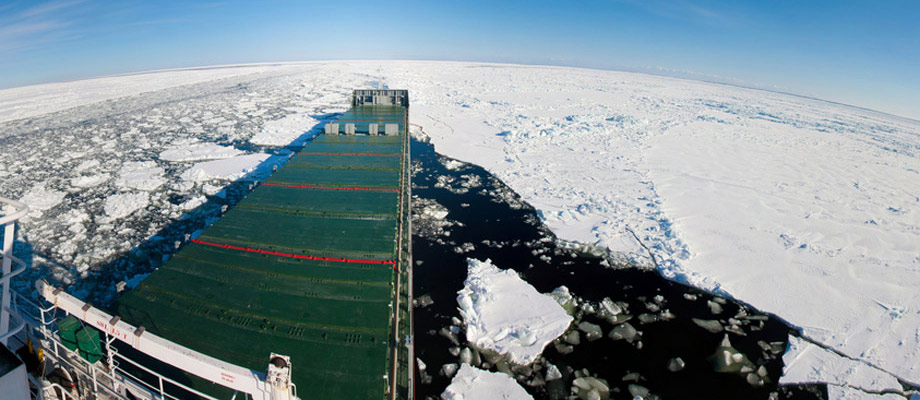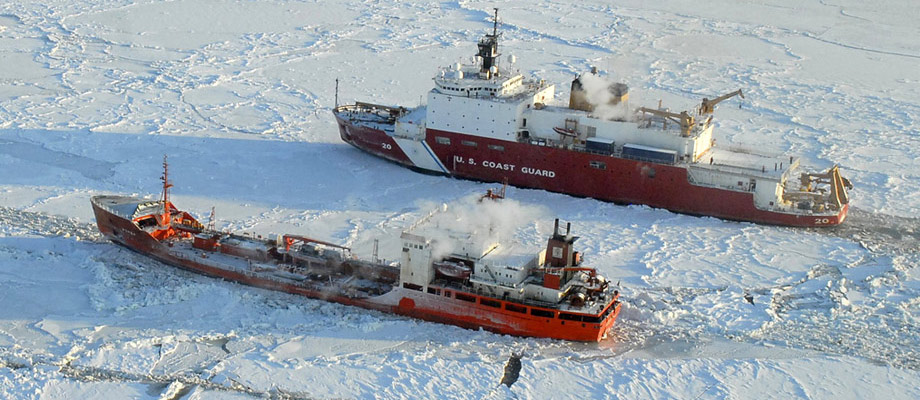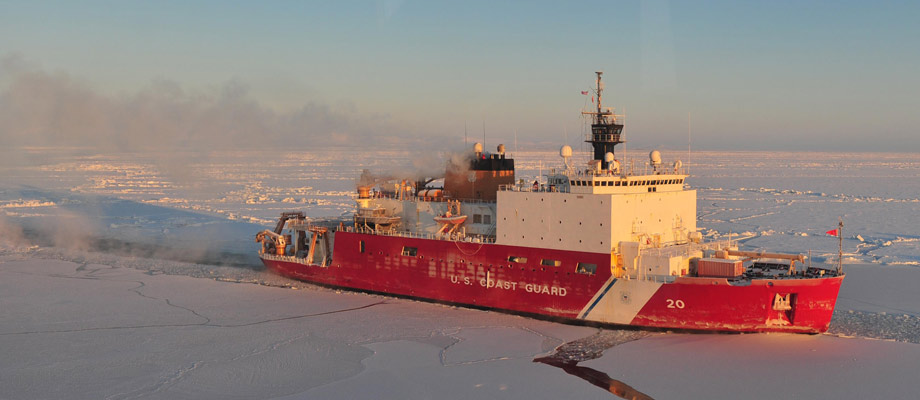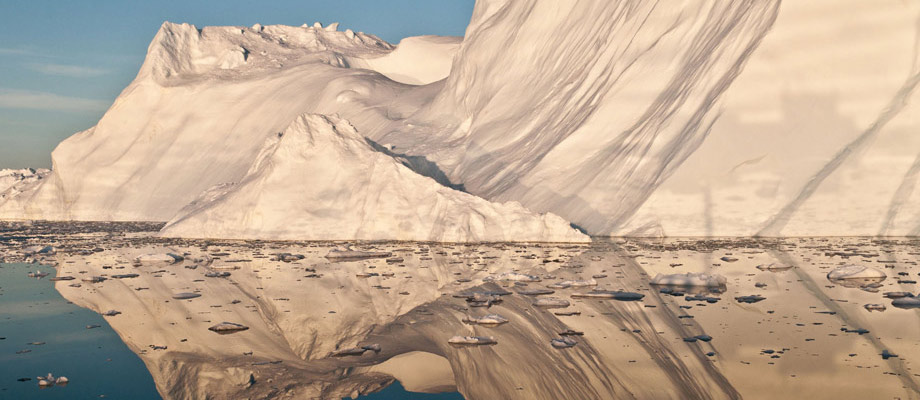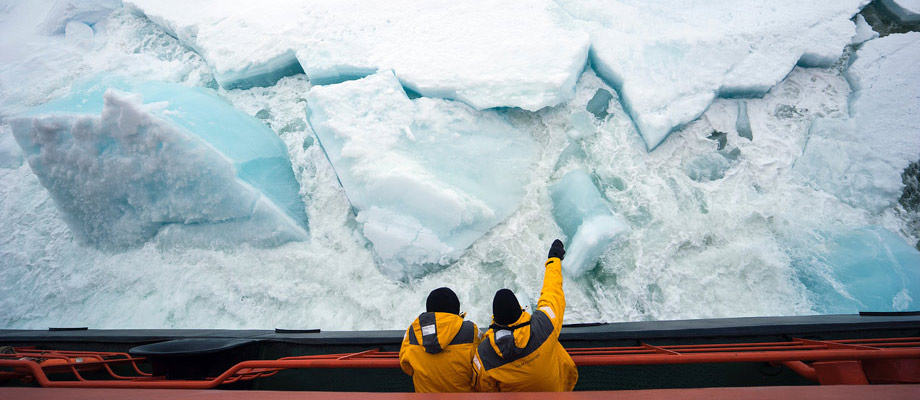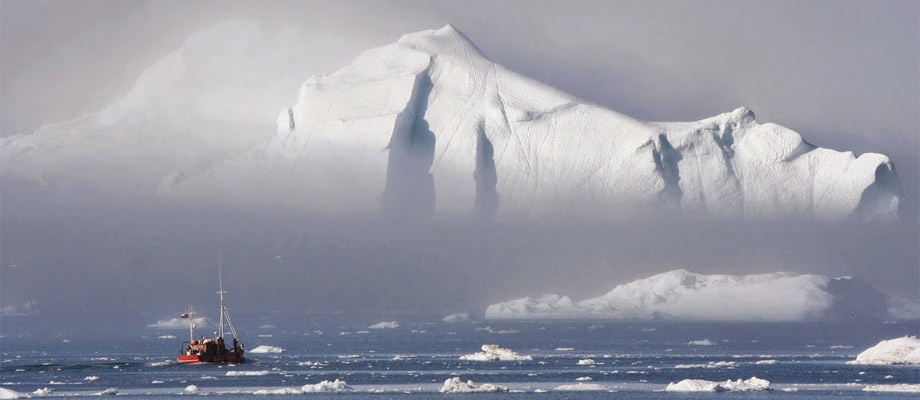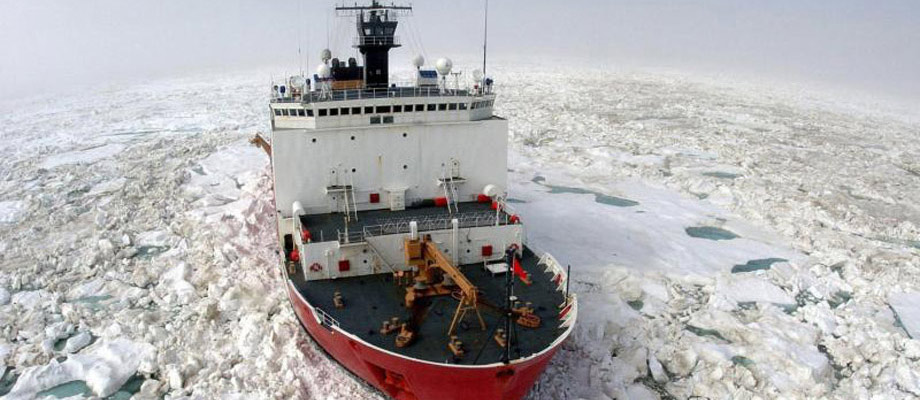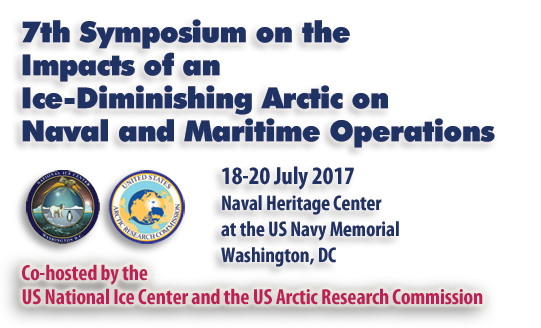Submitted posters include:
- Title:
- The US Navy's New Operational Capability in Global Ice Forecasting, (PDF, 1.46 MB)
- Authors:
- Pamela G. Posey1, E. Joseph Metzger1, Ruth H. Preller1,
Sean Helfrich2, AGC(AW) Christopher Edwards2, LT Emily Motz2
and Michael W. Phelps3
1Naval Research Laboratory, Stennis Space Center, 2National Ice Center, Suitland, MD, 3Jacobs Technology, Stennis Space Center
- Title:
- Evolution of the United States National Ice Center
- Authors:
- R. Lane and C. Panowicz
U.S. National Ice Center, Washington, DC
- Title:
- GLOBAL ARCHER The GLOBAL ARCtic High-altitude Environmental Research Initiative
- Authors:
- Janet Intrieri1, Michael Linden-VÝrnle2, Mark Buschbacher3,
Laurence Connor4, Frank Cutler3, Sinead Farrell4,
Scott Hensley5, Michael Hicks6, Paul Pestieau7,
Eugene Petrescu8, Paul Truant9
1NOAA OAR ESRL, 2Technical University of Denmark, 3NASA, 4NOAA NESDIS STAR, 5NASA JPL, 6USCG, 7Environment Canada, 8NOAA NWS AR, 9Transport Canada
- Title:
- Naval Ice Center Ice Stress and Fracture Risk Assessment Tool
Integrating USN Arctic model data and NAVICE analyst expertise to provide decision-making tools that support mission accomplishment, safety of life and property, and tactical operations of the USN's submarine force. - Authors:
- C. Panowicz and W. Clark
U.S. National Ice Center, Washington, DC
- Title:
- Development of U.S. Navy Coupled Atmosphere-Ocean-Sea Ice Earth System Model for Arctic Predictions, (PDF, 1.09 MB)
- Authors:
- Neil P. Barton1, E. Joseph Metzger2, Pamela G. Posey2,
Benjamin C. Ruston1, Alan J. Wallcraft2, Carolyn Reynolds1,
James Richman3, and Michael W. Phelps4
1Naval Research Laboratory, Marine Meteorology Division, 2Naval Research Laboratory, Oceanography Division, 3Florida State University, 4Jacobs Technology, Inc.
- Title:
- Overview of National Research Council of Canada Sea Ice and Iceberg Forecasting and Engineering Tools, (PDF, 534 KB)
- Authors:
- Denise Sudom, Anne Barker
National Research Council of Canada
- Title:
- The Bering Strait: Reducing Risk Through International Cooperation and Capability Improvements
- Authors:
- Jeremy McKenzie, Samuel Klarich, Catherine Ardrey, and Kristopher Lagor
Center for Arctic Study and Policy, US Coast Guard Academy
- Title:
- US National Ice Center Evaluation of the GOFS 3.1 for Operations
- Authors:
- Sean Helfrich1, Christopher Edwards2, Emily Motz2,
Gary Premo2, Caryn Panowicz2
1NOAA/NESDIS/STAR Satellite Ocean and Climatology Division, 2Naval Ice Center
- Title:
- Navigability Indicators for the Northwest Passage and the Northern Sea Route, (PDF, 1.96 MB)
- Authors:
- Harry Stern, Donna Hauser, Kristin Laidre, Richard McGovern
Polar Science Center, Applied Physics Laboratory, University of Washington
- Title:
- U.S. Naval Academy (USNA) Polar Science & Technology Program (USNA PS&TP) Ė National Aeronautical and Space Administration (NASA) Operation IceBridge (OIB) Ice Experiment (ICEX-2017)
- Authors:
- Joseph Smith and Shawn Gallaher
U.S. Naval Academy
- Title:
- Exploring the Use of Commercial Off-the-Shelf (COTS) Unmanned Quadcopters to Identify and Characterize Ice Surface Features
- Authors:
- Colton Byers and Joseph P. Smith
U.S. Naval Academy
- Title:
- Technologies for Low-Cost Observing in the Arctic
- Authors:
- Shawn Gallaher, Joseph P. Smith, Tong Ma, Scott Davids, and Scott Drayton
U.S. Naval Academy
- Title:
- The Arctic - A GEOINT Perspective?
- Authors:
- Dominic Keith
NGA, Maritime Navigation Division
The symposium organizers invite authors to submit abstracts to NESDIS.STAR.IDASymposium2017@noaa.gov for posters on Arctic-related maritime topics to be displayed during the symposium.
Submission Deadline:
14 July 2017 - 5:00 p.m.
Topics:
The abstracts must focus on Arctic marine operations (e.g., transportation, infrastructure, security, commerce, policy, law, technology), scientific results, or their application.
Abstract submission:
Submissions should include a title, author names, affiliations, contact information, and an abstract. The title is limited to 300 characters and the abstract text is limited to 2000 characters, excluding spaces, but including punctuation.
Dr. Sean Helfrich will serve as the point of contact for the poster session, and will correspond with authors.
Poster content:
The posters should include the information described above, as well as common elements, as appropriate, such as an introduction, materials and methods, results, conclusions, references, and acknowledgments.
Poster production info:
The maximum size for the poster is 36 inches by 48 inches. Easels, holding foam boards, to which posters can be pinned, will be provided at the venue.
Display:
The posters will be displayed for the duration of the symposium, and authors are encouraged to participate in a dedicated poster session that will be held during a symposium reception the evening of July 18th.
Authors are not required to remain by their posters during any particular period, but are encouraged to do so, or remain available, during scheduled breaks each day.
Poster authors should register for the symposium here.
Resources:
- 6th Symposium Report, (PDF, 871 KB)
- Arctic Report Card: 2016 Update
- SWIPA Report, (PDF, 4.8 MB)
Past Symposia:
- 2015 6th Symposium
- 2013 5th Symposium
- 2011 4th Symposium
- 2009 3rd Symposium
- 2007 2nd Symposium
- Naval Operations in an Ice-Free Arctic Symposium - 2001 Final Report, (PDF, 837 KB)
